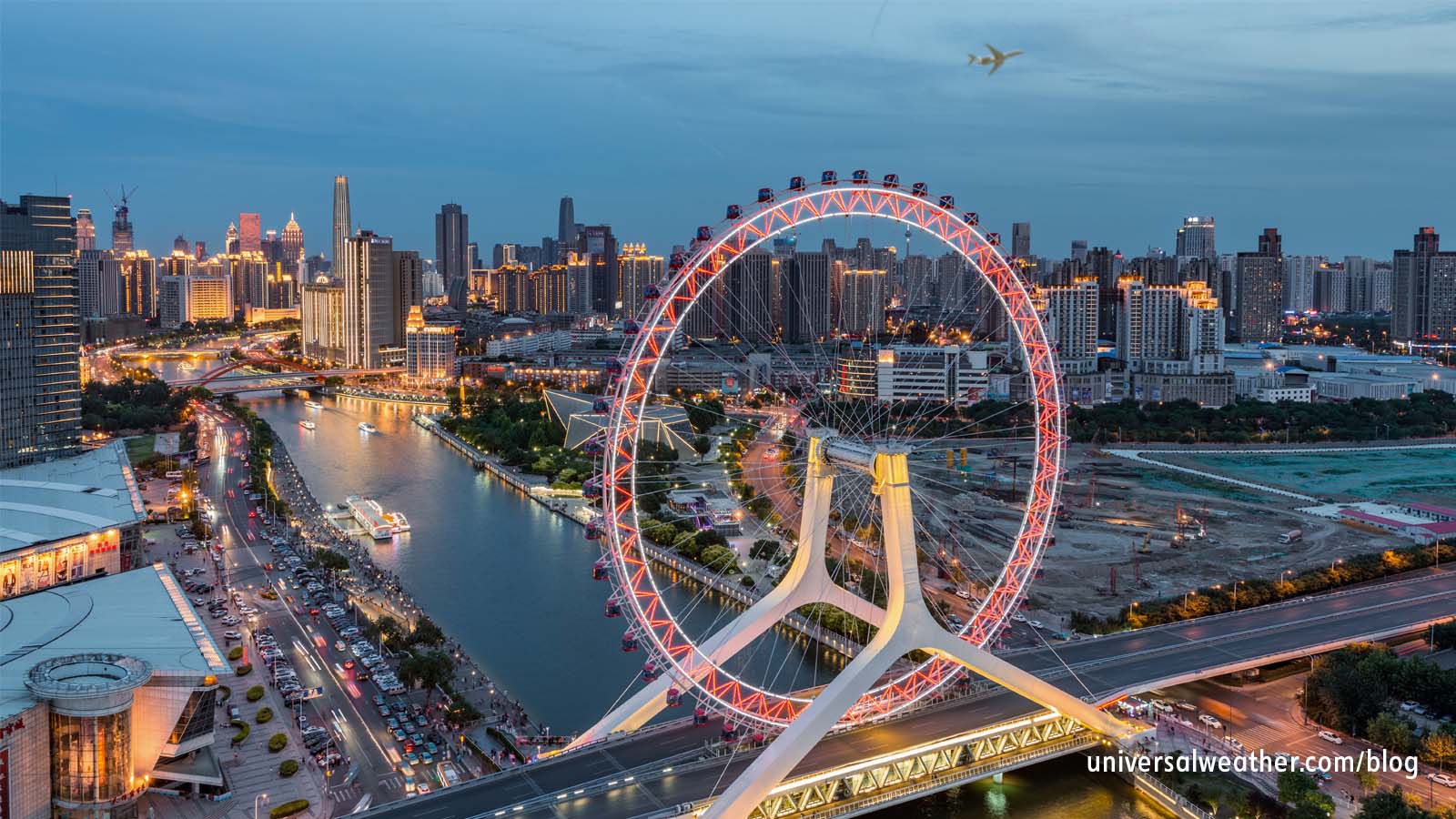Business Aircraft Operations to Tianjin, China: Part 2 – Permits, Visas and CIQ


This is a post by author Jimmy Young. Jimmy serves as country manager for Universal Aviation China, which has aircraft ground handling facilities in Beijing, Shanghai, and Guangzhou. Jimmy is an expert on business aircraft operations in China and can be contacted at jimmyyoung@universalaviation.aero.
This business aviation blog post continues from our article last week, titled "Business Aircraft Operations to Tianjin, China: Part 1 – Airport Basics."
Tianjin (ZBTJ), the preferred general aviation alternate for Beijing (ZBAA), is a straightforward destination in terms of airport access and operating flexibility. However, due diligence in permit and documentation pre-planning is important in ensuring smooth and delay-free operations.
The following is an overview of what you need to know:
1. Permit requirements
All arrivals into China, both private non-revenue and charter (non-scheduled commercial), require overflight and landing permits. ZBTJ has no requirements for airport slots or prior permission required. Landing permits can often be arranged by your 3rd-party provider with as little as 24 hours’ notification, assuming your documentation and required local sponsor letter are in order, and at the discretion of the Civil Aviation of China (CAAC). In general permit applications for China are not onerous or problematic. The important thing is to provide a correct schedule and a properly formatted sponsor letter. Most delays with landing permit applications have to do with sponsor letters drafted incorrectly or not on time.
2. Sponsor letter considerations
It’s important to be diligent in providing a correctly formatted sponsor letter to CAAC, at the time your landing permit application is submitted. Operators must coordinate closely with their local sponsor, and this can be time consuming. Sponsor letters must be written in Chinese and must always include a company "chop" (corporate seal).
3. Visa requirements
Visas are needed for entry to China for most nationalities of passengers and crew and cannot be obtained on arrival. At this time the visa exception for passengers staying in China less than 72 hours and continuing on to a third country is not available at ZBTJ. However, immigration authorities are working on changing this and hope to be able to offer this option in the future. In most cases, crews must always have appropriate visas prior to arrival, and they must be crew visas. For international tech stops, where no passengers/crew embark/disembark, visas are not needed. If, however, anyone embarks/disembarks during an international tech stop in China, all crewmembers must have visas and will go through Customs, Immigration, and Quarantine (CIQ) clearance.
4. CIQ options
CIQ clearance is available 24 hours at ZBTJ with a suggested minimum of two hours’ prior notice during night hours. Be aware that airport authorities must give permission for late-night CIQ clearance, and in some cases your request may be refused even if you’ve provided adequate advance notification. If you’re not able to secure permission for CIQ services during night hours, your options are to either wait on the ground in your aircraft until normal CIQ daytime hours or arrive earlier/later.
5. CIQ procedures
CIQ is cleared within the main terminal, and these services are available 24 hours with prior arrangement. Be aware that you may experience clearance delays when arriving during peak hours of commercial activity. In most cases a supervisory handling agent can negotiate with airport authorities to have a dedicated clearance lane available in the main terminals for passengers/crew. Transfer from your parking stand to the terminal is usually about 10 minutes, and it’s best to plan on another 10 minutes or so to clear CIQ. In some cases, by advance arrangement with airport authorities, you may be able to clear CIQ onboard. This, however, is not within your ground handler’s control. You’ll need to secure a "VIP letter" from a local government agency and then have your local sponsor negotiate onboard clearance directly with airport authorities.
6. Disposal of international waste
ZBTJ airport authorities are fairly lenient on disposal of international food products and onboard in-flight catering. While you’ll need to declare all onboard food items, the agriculture process is not as strict as it is in the U.S. and elsewhere. You’ll generally be permitted to bring in in-flight catering for the next leg of your trip. It’s important, however, to always confirm these arrangements in advance with your ground handler.
7. Additional reading
Read additional articles on business aviation operations in China.
Conclusion
When you operate to ZBTJ, it’s best to provide your ground handler with as much advance notification as possible and to be prepared for CIQ clearance within the main terminal. Also, be aware of landing permit requirements when traveling to China, including the sponsor letter process.
Questions?
If you have any questions about this article or would like assistance planning your next trip to China, contact Christine Vamvakas christinevamvakas@univ-wea.com.



